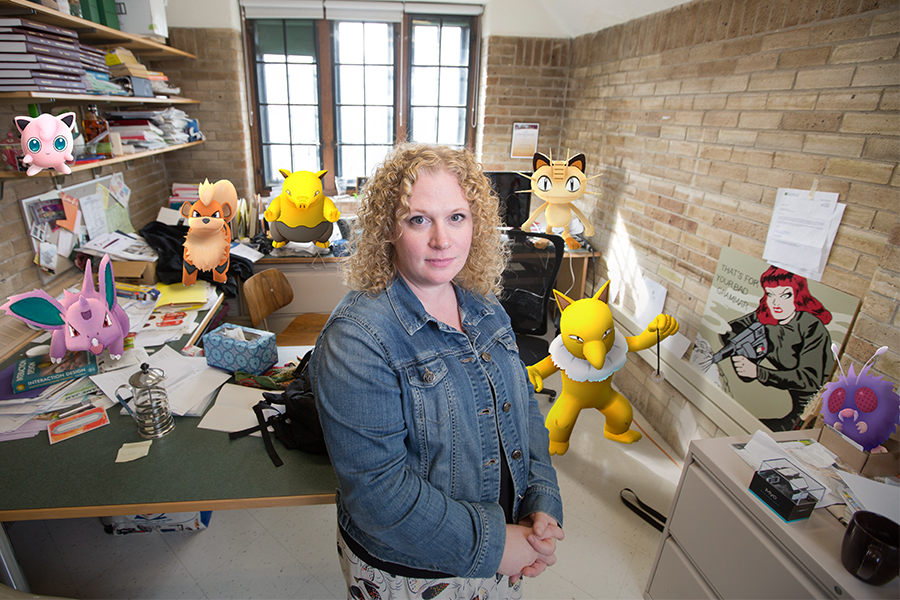Since officially launching in Canada July 17, Pokémon Go spread meteorically, leaping to the top of download charts while engaging millions of gamers around the world and changing the gaming landscape as we know it.
The game, which uses GPS and augmented reality to help users locate, capture and train virtual critters, was of particular interest to Regan Mandryk, an associate professor in the Department of Computer Science and an expert in human-computer interaction.
“It’s been an interesting summer watching what’s been going on right out my window and seeing how it has changed people’s interactions,” said Mandryk, whose research looks at how video games can be used to promote active lifestyles.
Others have taken notice, too. Given the density of PokéStops and gyms (see definitions, below), the U of S has become a hot spot for Pokémon Go players of all levels.
“People come here to play—not just students here are playing—but people come to campus to play at lunch, because it’s a good place to do that,” said Mandryk, who herself has reached level 20 in the game.
But why has Pokémon Go become a cultural phenomenon in such a short span of time? Mandryk believes it is the combination of two important factors.
“The technology matured to a place where they could build something that’s pretty robust and easy to access for people,” she said. That, along with the domain of the game itself, resulted in a hit. “Pokémon, which has a lot of nostalgia, is a really good match to the mechanics. So the kinds of activities you’re doing in the game are a good match to the kinds of things you would expect in a Pokémon-based game.”
The game has experienced some backlash, with concerns ranging from privacy and data access to users playing the game while driving or trespassing onto private property to catch the more elusive creatures. However, given the game’s exponential growth, Mandryk expects to see more games using the augmented reality and location-based activities.
“Pokémon’s been around for 20 years,” she said. “I think there’s a new generation of fans that are experiencing Pokémon through this interaction instead of the (original) trading cards or through the television show.”
She turned her attention to something that perhaps few have taken into consideration: what will become of the game during the brutal winter months, especially in Saskatchewan?
“The first couple of cold days, how much Pokémon Go is happening?” she asked with a laugh. “I’m interested to see what happens in winter.”
Pokéwhaaat?
With any new cultural phenomenon comes a unique lexicon. Here are some terms to learn.
Pokémon: media franchise encompassing a television show, movies, trading cards and video games. Also the collective name for the characters in the franchise.
Exergaming: a game that also benefits one’s physical fitness.
Augmented reality: technology that merges the physical world with the game’s digital setting.
Location-based gaming: game that involves user’s surrounding, typically by GPS.
Pokéstop: specific location accessible to users that contains rewards and other items to enhance gameplay.
Gym: virtual training centres where teams can battle to advance further in the game.
